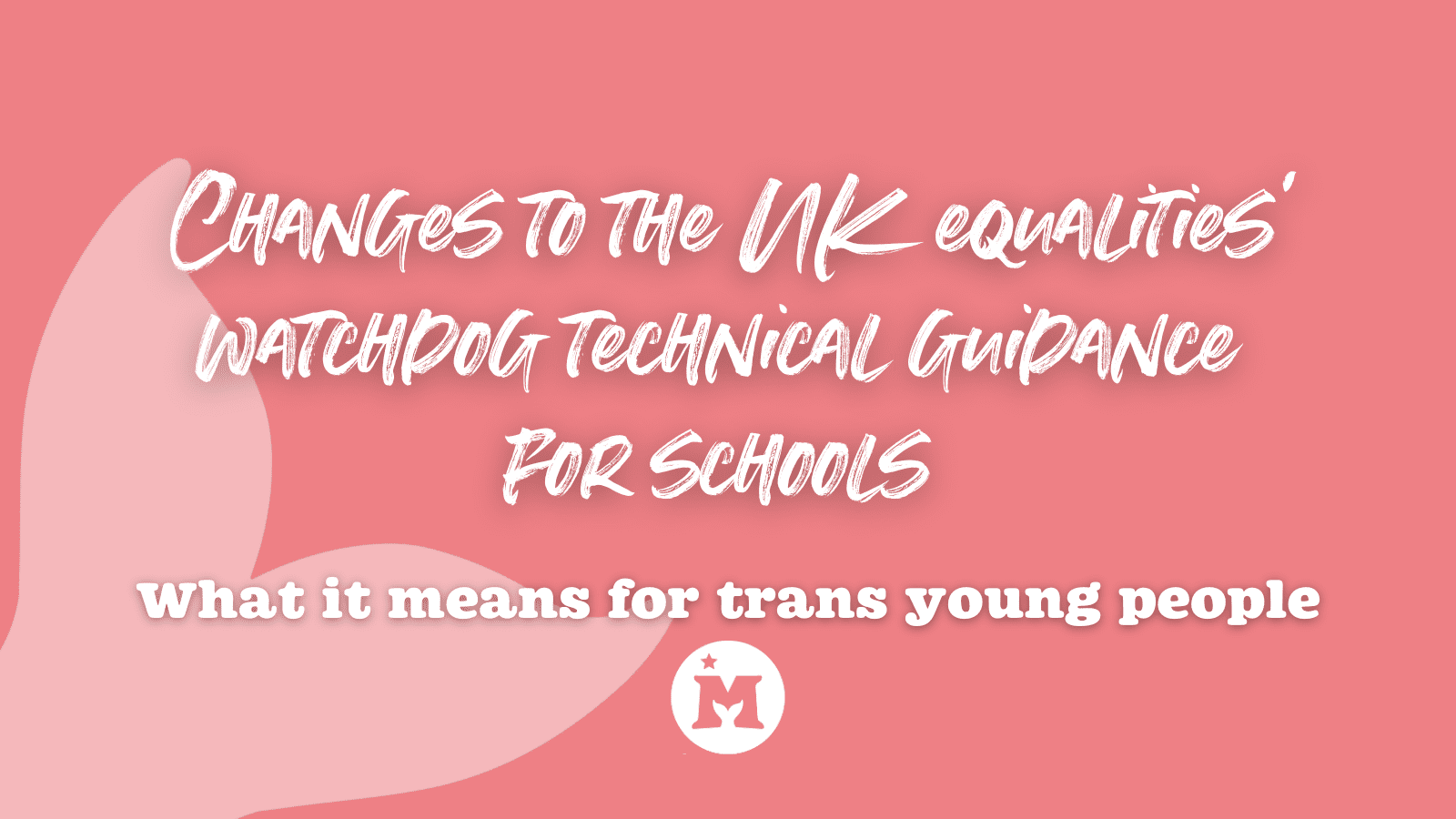
Mermaids’ Policy team looks at recent changes to the EHRC’s technical guidance for how schools should implement the Equality Act, and what it might mean for trans youth.
What have the Equality and Human Rights Commission (EHRC) said?
The EHRC have recently made changes to their technical guidance for how schools in England should implement the Equality Act 2010.
Robin Moira White, a barrister specialising in discrimination, has disputed its interpretation of existing equalities law.
It is important to note that the law has not changed, nor is this the long-awaited trans schools guidance promised by the UK Government.
In the absence of supportive guidance in England, schools may wish to look at trans-inclusive toolkits produced by the Scottish Government and Brighton & Hove City Council for examples of best practice.
Is it okay to misgender trans pupils?
The EHRC removed an example from the guidance explaining that a school refusing to use a trans pupil’s chosen name would be discriminatory. Despite misleading reports, misgendering a trans pupil remains unacceptable, and the guidance still includes examples, including the one below, which suggest that refusing to use a trans young person’s chosen name and pronouns is not lawful:
“A member of school staff repeatedly tells a transsexual pupil that ‘he’ should not dress like a girl and that ‘he’ looks silly, which causes the pupil great distress. This would not be covered by the harassment provisions, because it is related to gender reassignment, but could constitute direct discrimination on the grounds of gender reassignment.” (page 65)
All young people try out different ways of presenting as they grow up. This should not be different for trans young people, who deserve the basic dignity of being listened to and respected.
Can trans young people use facilities matching their gender?
Under equality law, trans people can only be excluded from single-sex spaces where it is considered a “proportionate means of achieving a legitimate aim”.
Robin Moira White writes that lawfully excluding trans pupils would “seem very unlikely where a pupil has declared themselves trans and so their circumstances are known to the school and there is no evidence of inappropriate behaviour in the use of toilets or changing rooms.”
In Brighton & Hove, where inclusive guidance has been followed by schools since 2013, trans young people have successfully been supported to access single-sex spaces in line with their gender identity without issue.
Trans young people face disproportionate levels of bullying and harassment with toilets and changing rooms provoking significant anxiety. Schools have a duty to provide a supportive and inclusive environment for all students, including facilities that enable trans young people to feel comfortable and be healthy.
How can I support trans young people at school?
The rhetoric from the Government toward trans children and young people seeks to deny their very existence. Their proposed approach to schools’ guidance would be a new Section 28 for trans pupils, if enforced.
While we continue to await publication of draft guidance from the Department of Education, our advice remains that schools continue to act within the law to uphold the safety of trans youth.
Other ways you can get involved:
➡️ Write to your MP using our tool, asking they only support guidance that protects trans young people.
➡️ Share our tool with your networks.
➡️ Consult The Good Law Project’s expert legal advice for trans pupils and their parents.
➡️ Make a donation and support our schools’ work.
